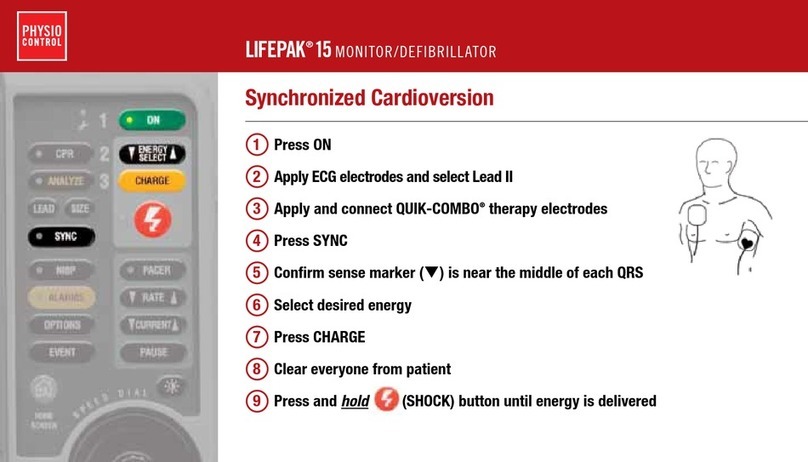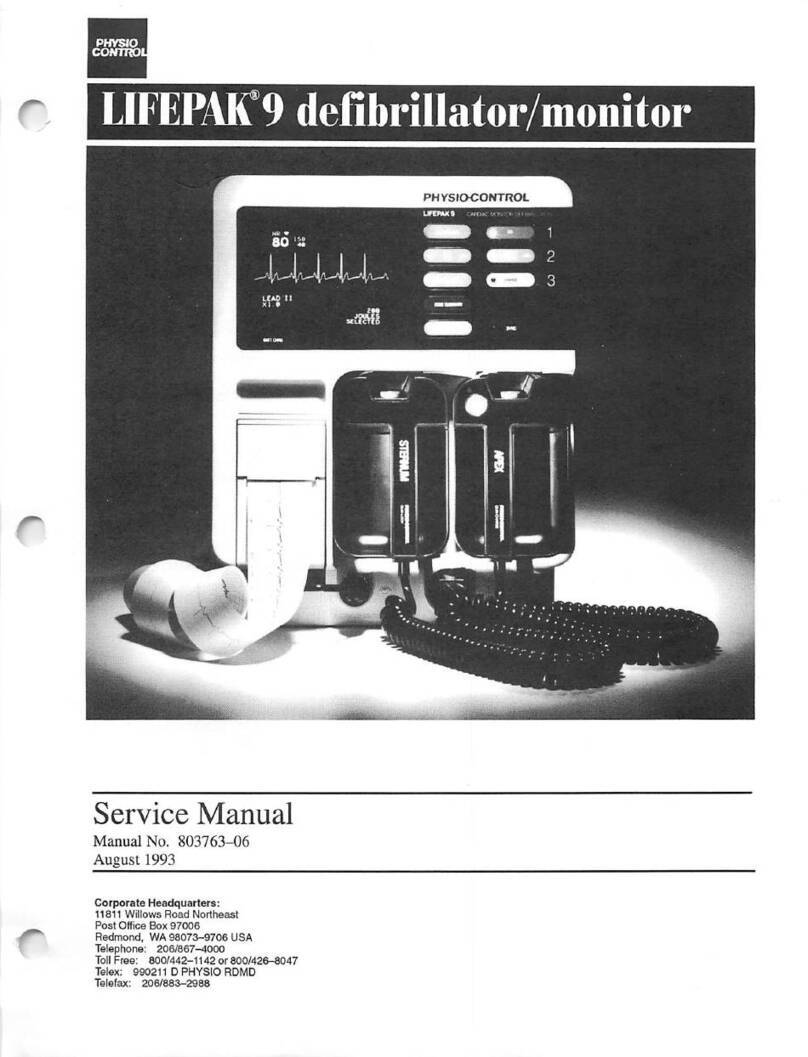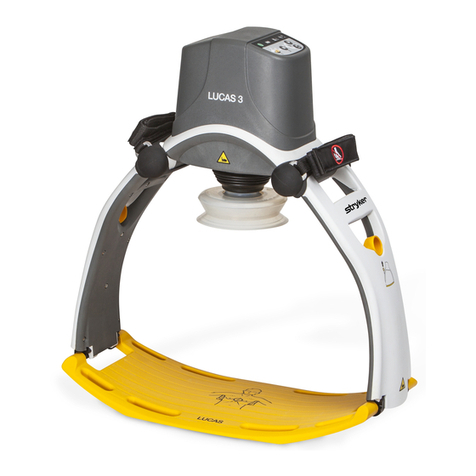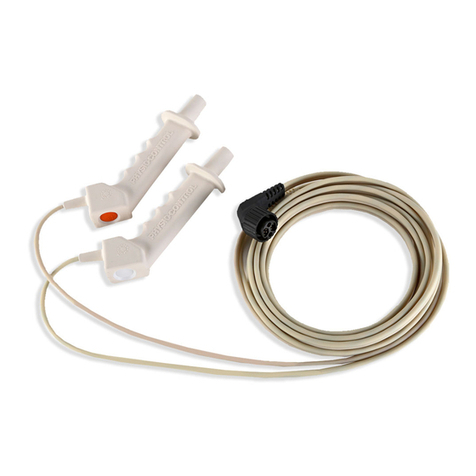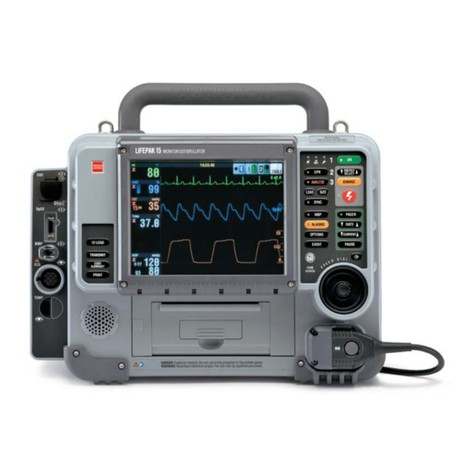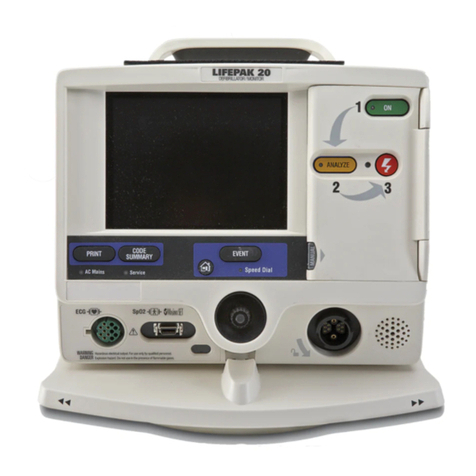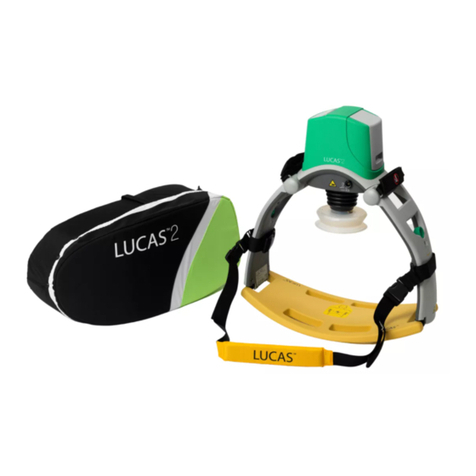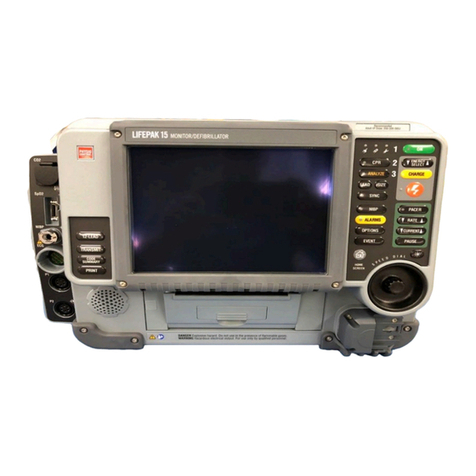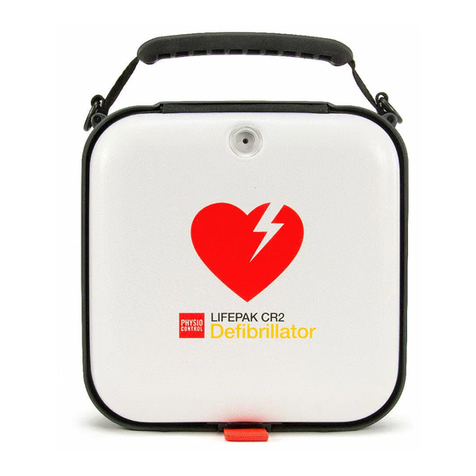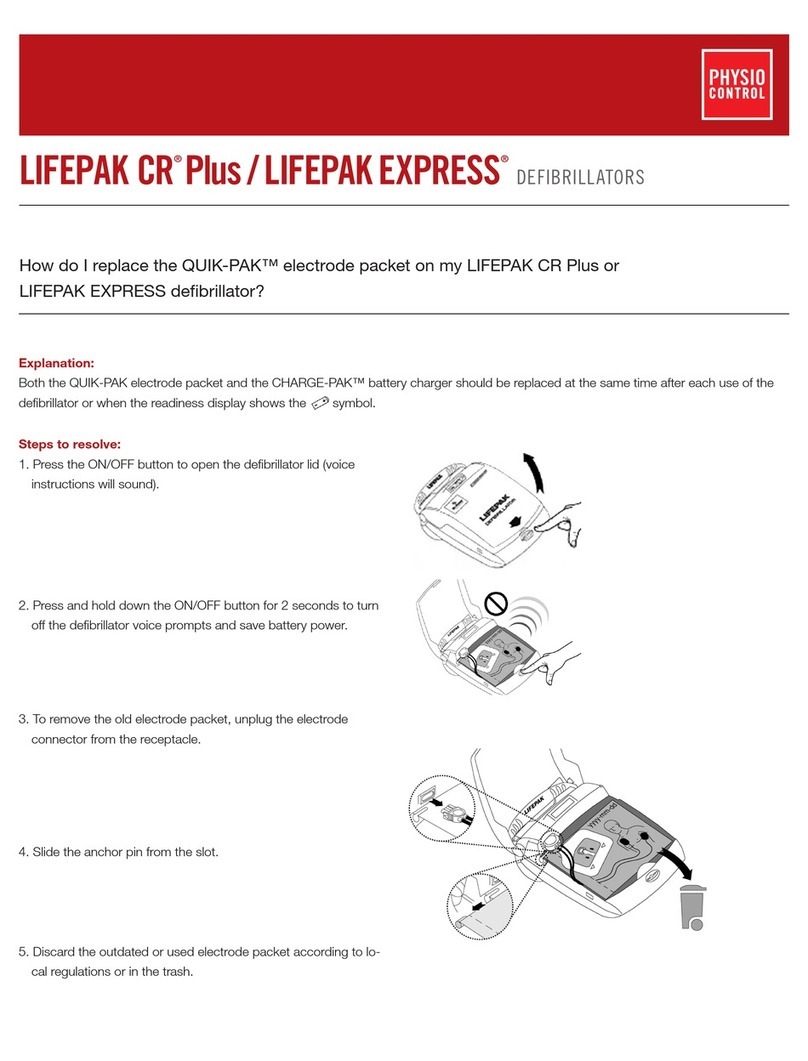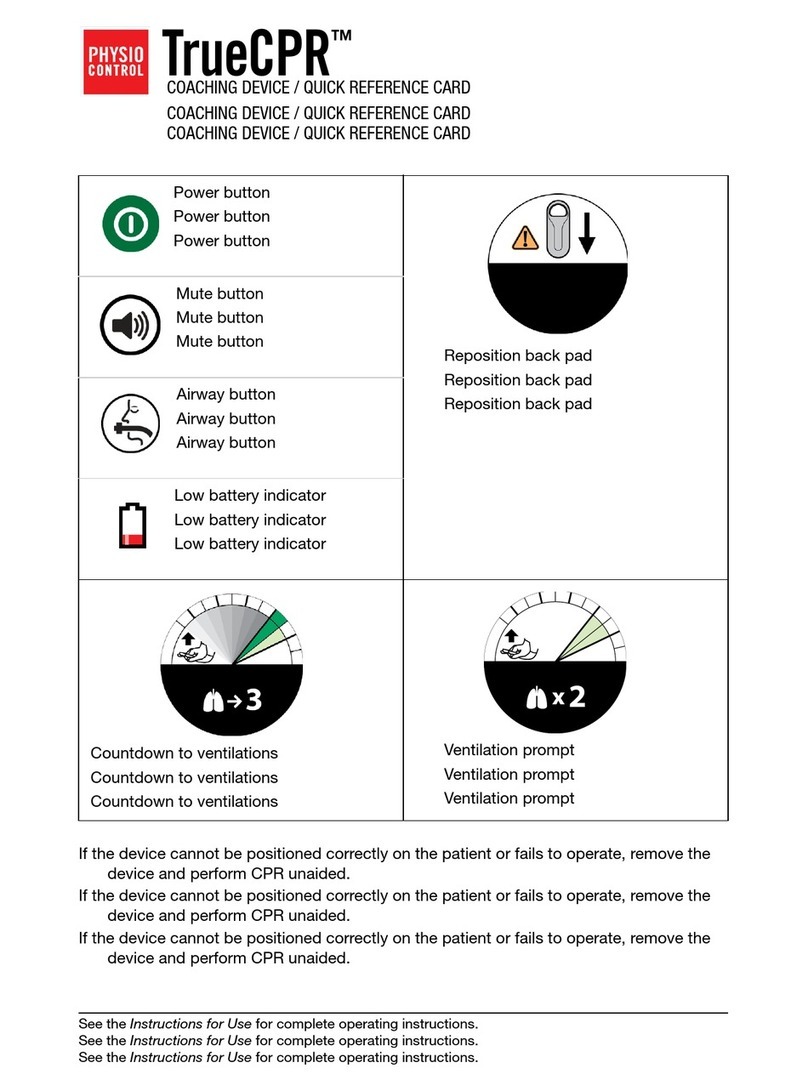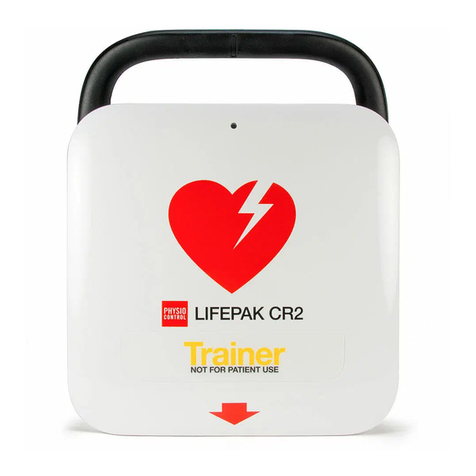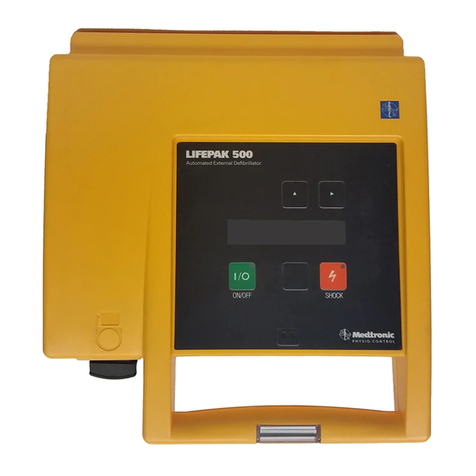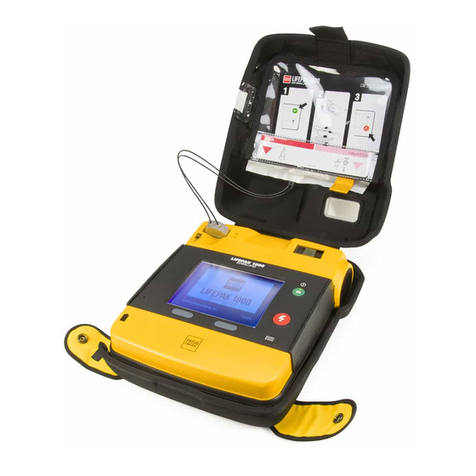6
2 Introduction
2.1 LUCAS Chest
Compression System
The LUCAS Chest Compression System
is a portable tool designed to overcome
problems identified with manual chest
compressions. The LUCAS device assists
rescuers by delivering effective, consistent
and continuous chest compressions as
recommended in the American Heart
Association guidelines1and the European
Resuscitation Council guidelines2.
The LUCAS chest compression system
can be used in a wide variety of situations
and settings; on the scene, during patient
movement, during transportation in road
and air ambulances, in hospitals and
catheterization laboratories.
2.2 Intended use
LUCAS Chest Compression System is to
be used for performing external cardiac
compressions on adult patients who have
acute circulatory arrest defined as absence
of spontaneous breathing and pulse, and
loss of consciousness.
LUCAS must only be used in cases where
chest compressions are likely to help the
patient.
The LUCAS device is intended for use as
an adjunct to manual CPR when effective
manual CPR is not possible (e.g.,during
patient transport or extended CPR when
fatigue may prohibit the delivery of effective/
consistent compressions to the victim,
or when insufficient EMS personnel are
available to provide effective CPR).
2.3 Contraindications
Do NOT use the LUCAS Chest Compression
System in these cases:
• If it is not possible to position the LUCAS
device safely or correctly on the patient’s
chest.
• Too small patient: if the LUCAS device
alerts with 3 fast signals when lowering
the Suction Cup, and you cannot enter
the PAUSE mode or ACTIVE mode.
1. 2015 American Heart Association Guidelines Update
for Cardiopulmonary Resuscitation and Emergency
Cardiovascular Care, Circulation 2015; 132; S313-S573
2. European Resuscitation Council Guidelines for
Resuscitation 2015, Resuscitation 2015;95:1-311
3. 2005 International Concensus on Cardiopulmonary
Resuscitation and Emergency Cardiovascular Care
Science with Treatment Recommendations, Resuscitation
2005;67:195
• Too large patient: If you cannot lock the
Upper Part of the LUCAS device to the
Back Plate without compressing the
patient’s chest.
Always follow local and/or international
guidelines for CPR when you use the
LUCAS chest compression system.
2.4 Side effects
The International Liaison Committee on
Resuscitation (ILCOR) states these side
effects of CPR3:
”Rib fractures and other injuries are common
but acceptable consequences of CPR
given the alternative of death from cardiac
arrest. After resuscitation, all patients
should be reassessed and reevaluated for
resuscitation-related injuries.”
Apart from the above, skin abrasions,
bruising and soreness of the chest are
common during the use of the LUCAS Chest
Compression System.
2.5 Main parts
The main parts of the LUCAS Chest
Compression System include;
• A Back Plate which is positioned
underneath the patient as a support for
the external chest compressions.
• An Upper Part which contains the
proprietary and rechargeable LUCAS
Battery and the compression mechanism
with the disposable Suction Cup.
• A Stabilization Strap which helps to
secure the position of the device in
relation to the patient.
• A Carrying Case.
